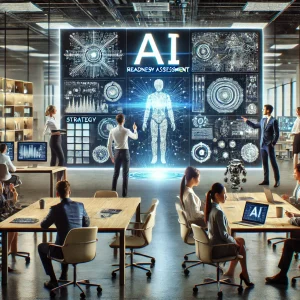
Deadlines.
The word often lands with the same dread as a ‘root canal’, they’re dreaded, debated, avoided, and universally disliked. But why?
For many teams, deadlines have become synonymous with unrealistic expectations, stress-induced all-nighters, and burnout.
But the truth is, deadlines aren’t the problem. It’s how they’re framed, communicated, and managed that makes all the difference.
What if deadlines could energise your team instead of draining them?
What if deadlines inspired creativity, collaboration, and even excitement?
Let’s try to flip the script.
Below are 5 powerful strategies to reimagine deadlines, transforming them from stress triggers into tools for motivation and success.
1. Turn Deadlines into Shared Goals, Not Ultimatums
Deadlines imposed from above feel like commands. Deadlines created collaboratively feel like commitments.
When a team feels ownership over a deadline, they’re more likely to rally behind it. Instead of saying, “Here’s the deadline,” ask, “What’s a realistic timeline for this project?”
Here’s how:
- Bring your team into the planning process. Let them break down the project into manageable chunks and propose timelines based on their expertise.
- Discuss potential roadblocks upfront. A shared timeline is only as strong as its weakest link. Anticipating challenges early builds trust and prevents mid-project panic.
- Be transparent about the “why.” Teams are more committed when they understand the purpose behind the deadline. Is it for a major client? A critical launch? Tie it to the bigger picture.
2. Focus on Outcomes, Not Hours
Deadlines become a source of anxiety when they’re tied to how much time people are working rather than the value they’re creating.
Shifting the focus from hours logged to impact achieved can reinvigorate your team.
Here’s how:
- Clearly define what success looks like: “What does an excellent deliverable look like for this project?”
- Give the team autonomy to decide how to meet the deadline. Micromanagement erodes trust, while autonomy fuels engagement.
- Encourage innovation. When teams are empowered to prioritise outcomes, they often discover faster, more creative ways to achieve goals.
3. Celebrate Progress, Not Just the Finish Line
Ever notice how most celebrations happen after the deadline is met? For teams working tirelessly, this often feels like too little, too late.
By celebrating milestones along the way, you sustain energy and morale.
Here’s how:
- Break the project into smaller milestones, each with its own mini-deadline.
- Celebrate these wins with your team. This could be as simple as acknowledging progress in a meeting or hosting a quick check-in to thank everyone for their efforts.
- Recognise individual contributions, too. Personalised appreciation goes a long way in motivating people.
4. Give Breathing Room for Creativity
Deadlines that are too rigid leave no space for innovation or problem-solving. Teams may deliver “just enough” to meet the deadline, but that often comes at the cost of creativity and quality.
The best ideas often come when there’s time to explore, reflect, and iterate.
Here’s how:
- Incorporate flexibility into your timelines to account for revisions and unforeseen challenges. A one-week deadline doesn’t mean the work should take exactly one week, it ensures there’s enough time to deliver quality without rushing.
- Create an environment where your team feels safe to say, “We need more time to do this right.” A little flexibility can yield game-changing ideas.
- Balance urgency with patience. Not everything requires a sprint; sometimes, a marathon approach delivers better results.
5. Make Deadlines Purposeful
Let’s be real: arbitrary deadlines breed resentment.
When people don’t understand why a deadline matters, they’re less likely to care about meeting it.
Here’s how:
- Always tie deadlines to a clear purpose. For example, “We need this campaign ready by [date] because it aligns with a critical product launch.”
- Explain the ripple effect. Help your team see how their work fits into the bigger organisational puzzle.
- Reframe deadlines as opportunities: “This is a chance to showcase our expertise to the client” rather than “We just have to get this done.”
Embrace Adaptive Deadlines
Sometimes, the best way to meet a deadline is to change it. Yes, really.
Rigid deadlines can backfire when circumstances shift. Agile teams know the value of flexibility, adjusting timelines to match evolving priorities.
How to adopt adaptive deadlines:
- Monitor progress regularly and assess whether the original deadline is still feasible.
- Communicate changes early. Resetting a timeline isn’t a failure; it’s a strategy to ensure quality.
- Focus on what’s truly important, delivering value, not just meeting an arbitrary date.
The Big Takeaway
Deadlines don’t have to be your team’s worst enemy. With the right approach, they can:
- Inspire creativity.
- Build trust and collaboration.
- Help your team deliver meaningful, high-impact work.
When you transform deadlines from a burden into a shared opportunity, you’ll see a dramatic shift in your team’s energy, focus, and success.









